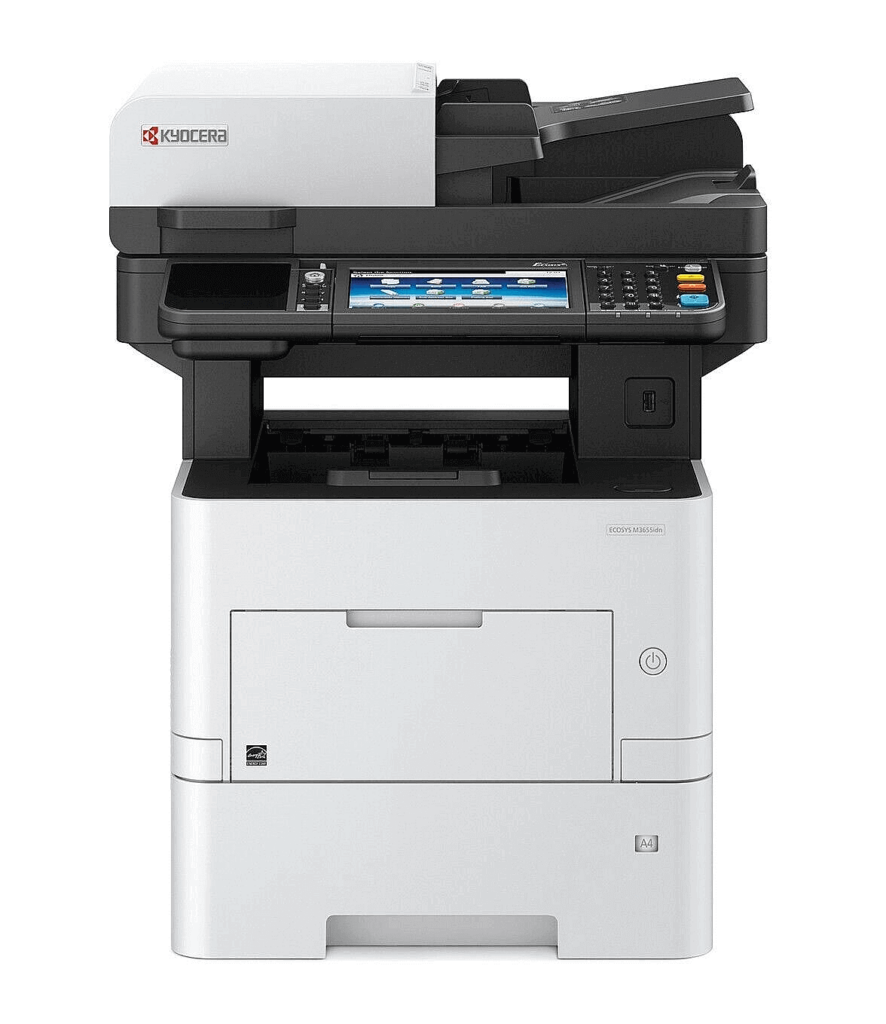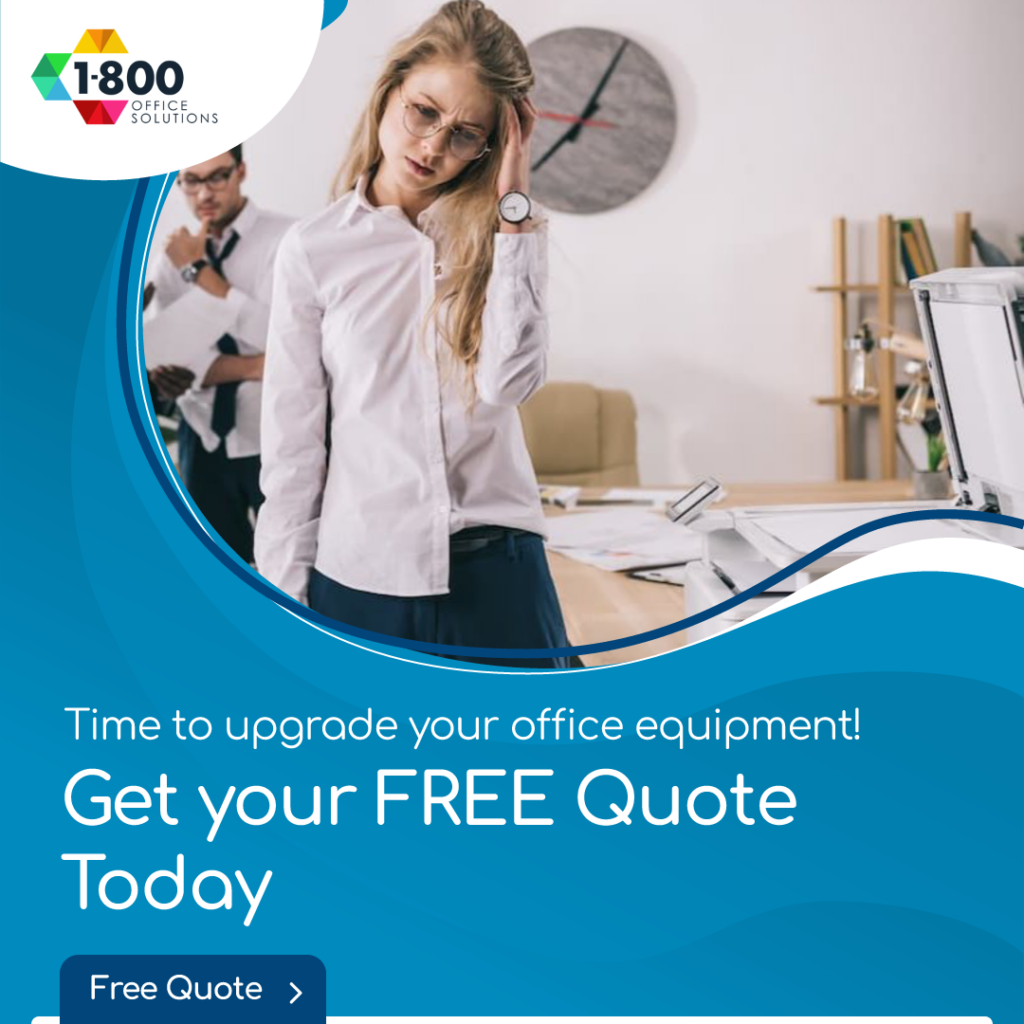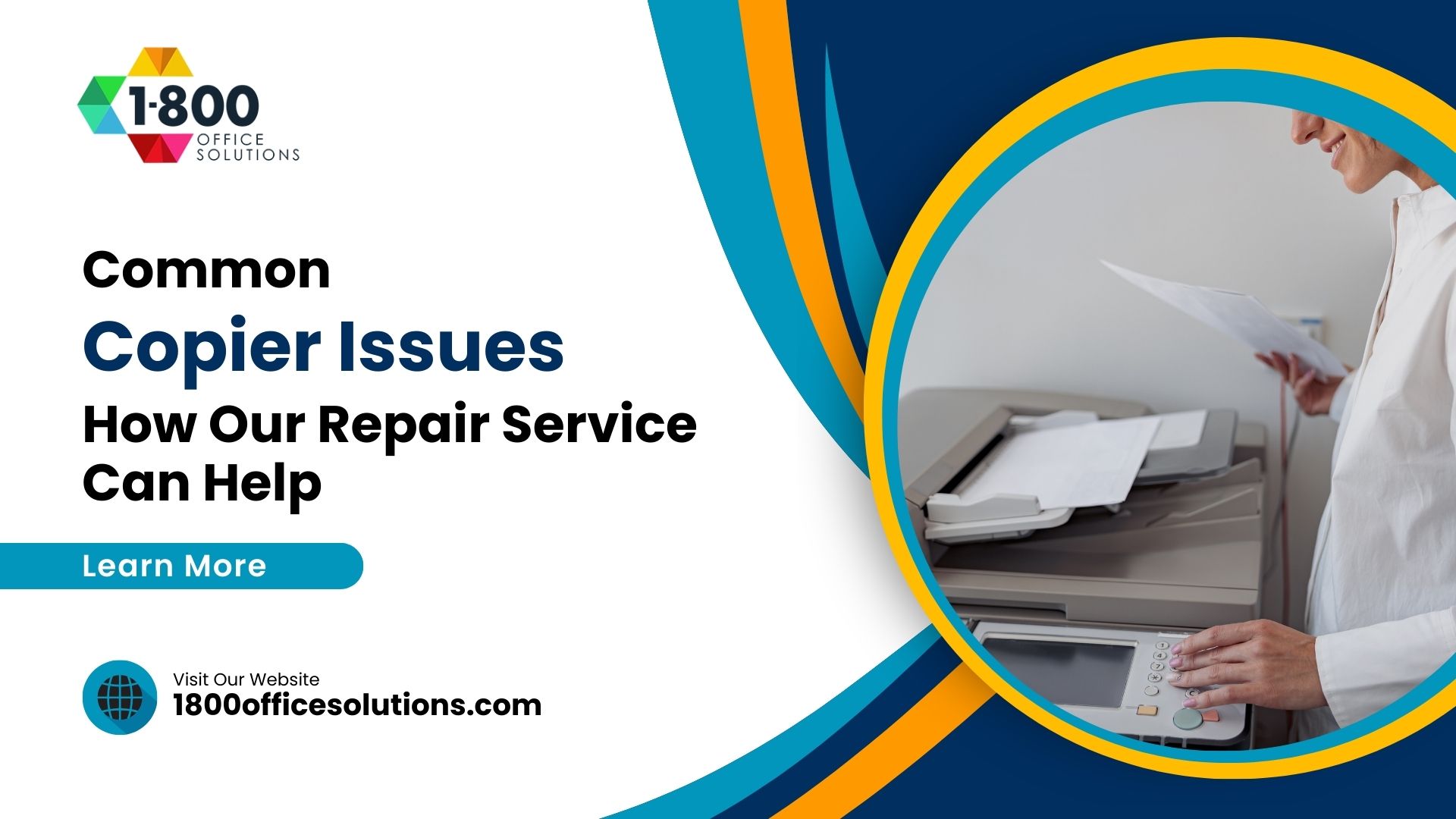Why Smart Businesses are Rethinking Commercial Copier Costs And You Should Too!
Copier Costs for Small Business
In recent years, the business landscape has witnessed a paradigm shift. What was once a predictable environment, with fixed overheads like the costs of leasing an office copier or the routine maintenance of a commercial copy machine, has evolved into a dynamic and ever-changing scenario. This transformation is largely attributed to the rise of smart, connected products that have seamlessly integrated into the fabric of modern businesses.
These innovative products, equipped with cutting-edge technology, have not only revolutionized operational processes but have also prompted businesses to re-evaluate and recalibrate their financial strategies. No longer are expenses viewed in isolation; they are now seen in the broader context of value addition and long-term returns.
For instance, the traditional copier costs and printer expenses, which were once considered mere operational necessities, are now being scrutinized for efficiency, productivity, and overall contribution to the business’s bottom line. This shift in perspective underscores a larger trend: businesses are becoming more adaptive, forward-thinking, and strategic in their approach, ensuring they remain competitive and resilient in a rapidly advancing technological era.
The Shift of Copy Machine Lease Towards Sustainability
In the contemporary business world, sustainability has transitioned from being a mere buzzword or perceived financial burden to a pivotal strategy that offers a tangible competitive advantage. As global awareness about environmental issues grows, progressive businesses are swiftly recognizing the multifaceted benefits of embracing environment-friendly practices. Beyond the evident ecological impact, such practices are proving to be financially astute. They not only help in reducing a company’s carbon footprint but also pave the way for substantial cost savings and potential revenue augmentation.
Traditional models of acquiring assets, such as the routine copier lease agreements, are undergoing scrutiny. Companies are now delving deeper, analyzing the total cost of ownership of assets like a commercial copier. By doing so, they often uncover hidden expenses and inefficiencies, leading them to more sustainable and cost-effective alternatives. This shift isn’t just about cost-cutting; it’s about optimizing resources, enhancing efficiency, and fostering a corporate ethos that values long-term sustainability over short-term gains.
Publications like “Sustainability as a Key Driver of Innovation” further emphasize this trend, showcasing real-world examples of businesses that have seamlessly integrated sustainability into their core operations, reaping both environmental and economic rewards in the process.
The Five Stages of Becoming Sustainable
The journey towards sustainability in business is not a straightforward path but rather a transformative process that encompasses various stages. Each stage represents a deeper integration of sustainable practices into the core of the business, moving from mere compliance to innovation-driven strategies. Here’s a detailed exploration of these stages:
1. Compliance as an Opportunity
Traditionally, compliance with environmental regulations and standards was viewed as a necessary evil—a box to be ticked off. However, forward-thinking businesses now see compliance as a starting point, an opportunity to align with global best practices and set the foundation for deeper sustainable actions. By embracing regulations, companies not only avoid potential legal pitfalls but also position themselves as responsible entities in the eyes of consumers and stakeholders.
2. Sustainable Value Chains
A truly sustainable business looks beyond its immediate operations. It scrutinizes its entire value chain, from the raw materials sourced to the eventual disposal of its products. For instance, when considering the lifecycle of an office copy machine, a sustainable approach would involve:
- Sourcing materials that are recyclable or have a minimal environmental impact.
- Ensuring that manufacturing processes are energy-efficient and produce minimal waste.
- Implementing eco-friendly packaging solutions.
- Providing guidelines for end-of-life disposal or recycling of the machine.
This holistic approach ensures that every touchpoint in the product’s life is optimized for minimal environmental impact.
3. Designing Sustainable Products and Services
Innovation in product design is at the heart of sustainability. Companies are now investing in R&D to create products that are not only efficient but also environmentally friendly. For instance, the new generation of copiers and printers are designed to:
- Consume less power, thereby reducing energy costs.
- Offer faster print speeds, ensuring productivity without compromising on energy consumption.
- Have longer lifespans, reducing the frequency of replacement and associated waste.
Such products not only reduce the operational costs for businesses but also appeal to eco-conscious consumers, opening up new market segments.
4. Innovative Business Models
Sustainability also drives innovation in business models. As companies understand the environmental and economic benefits of sustainable practices, they are exploring new ways to offer value to their customers. Some of these innovative models include:
- Selling used copiers at a reduced price, ensuring that products have a longer life and reducing electronic waste.
- Introducing a pay-per-use model for commercial copy services, allowing businesses to pay only for what they use, reducing wastage and promoting efficient use.
- Offering trade-in options where old machines can be exchanged for newer models, ensuring that older models are recycled or refurbished responsibly.
5. Next-Practice Platforms
The future of sustainability lies in leveraging technology to create next-practice platforms—solutions that set new industry standards. These platforms harness the power of technology to offer innovative solutions that were previously unimaginable. Examples include:
- Cloud-based printing solutions that allow businesses to print on-demand from anywhere, reducing the need for physical storage and minimizing paper waste.
- Integrating fax capabilities into a standard office copier, reducing the need for multiple devices and thereby conserving resources.
- Using AI and machine learning to predict when a machine might need maintenance, ensuring optimal performance and reducing downtime.
The journey towards sustainability is a continuous process of evolution and innovation. It’s about viewing every challenge as an opportunity to do better—for the environment, for customers, and for the bottom line. As businesses progress through these stages, they not only reduce their environmental impact but also position themselves as leaders in a globally connected, eco-conscious market.
The Radical Shift in Commercial Copy Business Operations
The dawn of the digital age has ushered in an era where smart products are not merely enhancing industries but fundamentally revolutionizing them. These products, embedded with sensors, software, and connectivity, are creating a world where devices communicate, learn, and adapt. The humble copier machine in the corner of the office, which once had a singular function, is now a part of this vast interconnected ecosystem.
This wave of interconnectivity is compelling businesses to undergo a metamorphosis in their strategies, operations, and even organizational structures. Traditional paradigms are being challenged. For instance, the age-old practice of purchasing a copier as a capital expense is undergoing scrutiny. With the availability of real-time data, businesses can now understand usage patterns, leading to more informed decisions.
Instead of buying a copier, companies might opt for flexible leasing options. These could be tailored to their unique requirements, be it based on pages per month, peak usage times, or specific project needs. Such models not only optimize costs but also ensure that businesses have access to the latest technology without the burden of ownership.
Furthermore, as devices become smarter, they offer insights that were previously inaccessible. This data-driven approach allows businesses to preempt challenges, streamline operations, and enhance customer experiences. Publications like Concerns about the Future of Digital Life provide a deeper exploration into these transformative shifts, emphasizing the need for businesses to adapt, innovate, and evolve in this dynamic landscape.
New Relationships with Customers
In the digital age, businesses are experiencing continuous and open-ended interactions with their customers. Gone are the days when a transaction ended after purchasing a commercial copier or inquiring about copier prices. Today, with the integration of smart technology, businesses can track how often a business copy machine is used, its pages per minute, and even when it might need servicing.
This wealth of data is reshaping customer relationships, allowing businesses to offer tailored solutions, such as suggesting when to lease a copier instead of buying, or providing insights into the total cost of ownership of a printer and copier.
Redefining Business Processes
The introduction of smart products is having a profound impact on various business functions. From sales teams updating commercial copier prices based on real-time market trends to customer service teams preemptively addressing issues with a multifunction printer, the landscape is evolving rapidly. This evolution demands intense coordination among functions.
For instance, the sales team must be in sync with copier dealers to ensure accurate pricing, while the IT team needs to ensure that the office equipment, like copiers and printers, is always online and secure.
Emergence of New Organizational Structures
The digital transformation wave is revolutionizing the business world, especially in the realm of office equipment. One of the most evident shifts is in the arena of commercial copier prices. With every business copy machine, from the standard to the high-end copier, generating immense data, the cost of ownership becomes a critical consideration.
In today’s market, when you look at copier machine costs, it’s not just about the initial price. Whether you decide to buy a commercial copier or choose to rent or lease, factors like pages per minute, total cost of ownership, and even the cost to lease play a significant role. The difference between a home copy machine and a business one isn’t just in how much they cost but also in their printing volume. For instance, a good home copy machine might handle fewer copies per month, while a higher-grade commercial copier could manage thousands.
The multifunction printer, which combines a printer and copier, has become a staple in the small office environment. But how much does a commercial printer cost? Depending on printing speed and other features, commercial copy machines range in price. The primary difference between a home copy machine and a business one is printing volume. An average office copier might handle a few thousand copies per month on the low end, while higher-grade commercial copiers reaching into the tens of thousands.
When considering the ideal copier for your business, it’s essential to factor in additional costs. For instance, the cost of color printing, copier service, and even how much paper the machine might use. The best commercial copier brands offer a balance between price and performance, ensuring that businesses get value for their money.
Moreover, the office space required for these machines, especially if you need more than one copier, can impact the overall office environment. Commercial copiers also come with features like fax machine capabilities, laser printer functions, and more. The best office copier isn’t just about cost; it’s about meeting printing requirements efficiently.
Whether you’re looking for a really good home copy machine or exploring office copier machine costs, it’s crucial to consider not just the copier price but the entire ecosystem around it. From copier dealers to copy machine suppliers, the choices you make can significantly influence how much you will pay in the long run.
The Future of Smart Businesses & Commercial Copier
The trajectory of modern business is unmistakably headed towards a future dominated by intelligent, interconnected products. As technology relentlessly advances, it’s paving the way for unprecedented changes in how businesses operate and strategize.
One of the most palpable shifts will be an intensified reliance on data. The granularity of insights available will be astounding. Businesses won’t just have a macro view of their operations; they’ll have micro-level details. For instance, they’ll know precisely how much paper a copier consumes in a week or the frequency with which a fax machine is deployed in an office environment. These insights will empower businesses to optimize operations, reduce wastage, and enhance efficiency.
Furthermore, the lens through which purchasing decisions are made will undergo a transformation. The focus will shift from just the initial price tag to a more holistic view of costs. When evaluating a copier price, businesses will factor in not just the upfront expense but also the additional cost spanning its entire lifecycle, including maintenance, upgrades, and potential downtimes.
What People Also Ask
Why is sustainability crucial for businesses today?
Sustainability is essential for businesses today because it ensures long-term viability. As resources become scarcer and consumers become more environmentally conscious, businesses that prioritize sustainability stand out, attract more customers, and ensure that they don’t run out of the resources they depend on, be it paper for a color copier or energy for a commercial copy machine.
How do smart products change the customer-business relationship?
Smart products, like an advanced office copier that can track copies per usage or a printer that can order its ink, offer businesses real-time data. This data allows businesses to understand their customers better, predict their needs, and offer personalized solutions, thereby strengthening the customer-business relationship.
What are the challenges of transitioning to sustainable practices?
Transitioning to sustainable practices can be challenging because it often requires an upfront investment. For instance, a business might need to replace its old office copy machines with newer, energy-efficient models. There’s also a learning curve associated with new technologies and practices. However, the long-term benefits, both in terms of cost savings and positive brand image, often outweigh these challenges.
Conclusion
In conclusion, the age of smart products is not on the horizon; it’s here. From redefining customer relationships to transforming business processes and organizational structures, the impact is profound. For businesses, the message is clear: rethinking costs, especially those associated with office essentials like copiers and printers, is not just a necessity but a strategic imperative.
Whether you’re a small office looking for the best office copier or a large enterprise deciding between standard commercial copy machines and higher-grade commercial copiers, the choices you make today will shape your success tomorrow.












